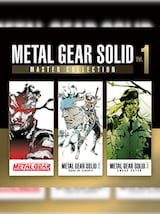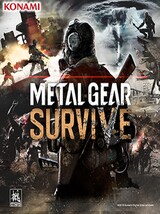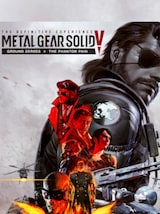Metal Gear is a series of Japanese games that combine elements of stealth, espionage, and action. The father and creator of the series is Hideo Kojima, and the Metal Gear (MG) games have been published by Konami for years.
The Metal Gear franchise has left a significant mark on pop culture. Aside from the fact that almost everyone has heard of Metal Gear Solid (MGS) or the character Snake, the game has inspired many other titles that emerged later, including Sniper Elite and Splinter Cell.
Would you like to learn more about Metal Gear Solid games? Discover, who made all of them and whether Kojima was involved in the production of all parts? And, most importantly, how many Metal Gear games are there? We’ll answer all these questions in the following article!
- The Origin: Metal Gear (1987)
- Sequel and Expansion: Metal Gear 2: Solid Snake
- Enter the 3D Era: Metal Gear Solid (1998)
- Sequel and Spin-off: Metal Gear Solid 2: Sons of Liberty
- Taking It Back to the Past: Metal Gear Solid 3: Snake Eater
- Portable Stealth: Metal Gear Solid: Portable Ops & Peace Walker
- The Turn of the Century: Metal Gear Solid 4: Guns of the Patriots
- A New Era Begins: Metal Gear Solid V: Ground Zeroes & The Phantom Pain
- The Spin-off Experiments
- The Mastermind: Hideo Kojima
- The Impact of Metal Gear on Gaming Culture
- Conclusion
The Origin: Metal Gear (1987)
The Metal Gear series dates back to 1987 when the first instalment landed on the MSX2. Hideo Kojima conceived the idea of creating a game focused on stealth and quietly avoiding enemies rather than engaging in full-action combat. Despite technological limitations, the creators managed well, offering a top-down view, simple animations, and engaging missions.
The game was almost immediately appreciated by players and was later released on NES, MS-DOS, Commodore 64, Wii, and mobile phones.
In this title, we follow the story of Solid Snake, a member of the elite FOXHOUND group. The plot is set in an alternate reality in the year 1995, with the threat of using the Metal Gear, a nuclear-equipped war machine, constructed in the African fortress Outer Heaven, hanging over the world.
A secret agent, Gray Fox, is sent into action, but he does not return from the mission. At this point, Solid Snake is brought into action, and his task is to prevent the attack of the Metal Gear and to rescue the team member. Solid Snake’s actions are directed by Big Boss, who… turns out to have questionable intentions.
Sequel and Expansion: Metal Gear 2: Solid Snake
The next instalment, Metal Gear 2: Solid Snake, was released in 1990 on the MSX2. Similar to its predecessor, the game focused on silent infiltration and mission execution without being noticed.
The mechanics were slightly improved, with enemies now reacting to sounds, having an increased field of vision, the ability to turn their heads, and patrol the entire map simultaneously.
The game is set in 1999, during the ongoing Cold War, leading to a fuel crisis. Dr. Kio Marv discovers OILIX, microorganisms that can transform oil into fuel, offering a solution to the crisis. However, Marv gets kidnapped.
Once again, players take on the role of Solid Snake, tasked by Colonel Roy Campbell to rescue Dr. Marv, held captive in the militaristic and dictatorial country of Zanzibar Land. This installment also reintroduces Big Boss and Gray Fox.
Enter the 3D Era: Metal Gear Solid (1998)
The third installment was released in 1998, representing a significant revolution as it directly hit the PlayStation and was fully developed in 3D.
Set six years after the events of MG2, the story unfolds in the Fox Islands base in Alaska, now in the hands of rebels who have separated from FOXHOUND.
These rebels threaten to attack the USA unless they receive a ransom and the body of Big Boss within 24 hours. Interestingly, the leader of the rebels is Solid Snake’s genetic brother, Liquid Snake, the main antagonist in this part.
Playing as Solid Snake, we are asked by Roy Campbell for help once again. The mission is to rescue hostages, including the colonel’s daughter, investigate the rebels’ plans, and defeat them. Legendary members of FOXHOUND, such as Revolver Ocelot, pose challenges.
A twist reveals that both Solid Snake and Liquid Snake are not real brothers, but products of an experiment to clone Big Boss – the greatest soldier ever.
Sequel and Spin-off: Metal Gear Solid 2: Sons of Liberty
MGS2: Sons of Liberty, the fourth main instalment, was released in 2001 on the PS2. It serves as a direct sequel to Metal Gear Solid and features two separate storylines, Tanker Incident and Big Shell Incident.
The first segment follows Solid Snake two years after the events in Alaska. Snake becomes a member of a new organization called Philanthropy, dedicated to combating the production of Metal Gear war machines. The story involves a new MG model transported on a tanker along the Hudson River, leading to encounters with Revolver Ocelot.
The second storyline introduces a new character, Raiden, two years later, dealing with a terrorist group called the Sons of Liberty. Surprisingly, Solid Snake is their leader.
Raiden, a new member of FOXHOUND, is sent to rescue hostages at a marine purification facility near New York. During the fights, he is seriously injured, leading to the replacement of some body parts with bionic equivalents.
Taking It Back to the Past: Metal Gear Solid 3: Snake Eater
Metal Gear Solid 3: Snake Eater, the fifth installment, was released in 2004 and also made its way to the PS2. However, this time, it is not a continuation of the story, but a prequel set in the 1960s during the Cold War.
An expanded version called Metal Gear Solid 3: Subsistence was released in 2006 for the same console. Snake Eater is considered one of the best Metal Gear Solid games by many players.
The game’s action takes place in the USSR, in Tselinoyarsk – a facility infiltrated by a young CIA agent named Jack. For the mission, he adopts the codename Naked Snake (what is interesting – that’s exactly him who becomes Big Boss later). The facility holds a scientist, Nikolai Stepanovich Sokolov, specializing in nuclear engineering.
Sokolov, who had escaped to the USA years earlier, has returned to his homeland under a peace treaty. The Russians, disregarding international agreements, aim to create a world-threatening weapon with Sokolov’s help.
Portable Stealth: Metal Gear Solid: Portable Ops & Peace Walker
Metal Gear Solid: Portable Ops is a direct sequel to Snake Eater, set in 1970, six years after the previous events. This title was released exclusively for the PSP in 2006.
Once again, players take on the role of Naked Snake, who must confront members of his unit, FOXHOUND, who have revolted and taken over a base in South America. In this title, players can not only stealthily bypass enemies but also eliminate and recruit them.
Metal Gear Solid: Peace Walker is the next instalment, created for the PSP in 2010. It continues the events of MGS: Portable Ops, and is set in 1974. After leaving FOXHOUND, Naked Snake, now known as Big Boss, establishes his own military unit – Militaires Sans Frontières (MSF). He and his soldiers must deal with a mysterious military unit stationed in Costa Rica, with a nuclear tank called Peace Walker under their command.
The game is divided into two modes: Missions and Mother Base. The latter involves capturing enemy vehicles, building the base, and interrogating recorded tapes that delve deeper into the lore. This part introduces characters like Ricardo “Chico” Valenciano Libre and student Paz Ortega Andrade, who play important roles in MGS5.
The Turn of the Century: Metal Gear Solid 4: Guns of the Patriots
MGS4: Guns of the Patriots, released in 2008, is a continuation of the saga set in the timeline after MGS2. The game featured a significant technological leap, being released on the seventh-generation console – PlayStation 3.
In 2014, five years after the Big Shell Incident, the lifting of military action restrictions led to the rise of many private military companies (PMC). This, in turn, led to the development of nanotechnology controlled by a system called Sons Of Patriots (SOP).
The five largest PMCs are controlled by people from Outer Heaven, led by Liquid Ocelot (Revolver Ocelot, but being now a mental doppelgänger of Liquid Snake). Their plan is to combine military forces and take over SOP.
A visibly ageing Solid Snake, now known as Old Snake, is sent on a mission to stop the enemy. MGS4: GotP is a game where players embody Solid Snake for the last time. However, Raiden, known from MGS2, joins Snake during the mission.
A New Era Begins: Metal Gear Solid V: Ground Zeroes & The Phantom Pain
Metal Gear Solid: The Phantom Pain is the latest game in the MGS series, premiering in 2015. Metal Gear Solid V: Ground Zeroes was released a year earlier. Both games, unlike the rest of the series, were available on multiple platforms, including PS3, PS4, X360, XOne, and PC. Both games also offered players a much more open world.
In Ground Zeros, the story takes us to 1975, continuing the events from Peace Walker. Paz Ortega Andrade and “Chico” Valenciano Libre are held in the Omega camp in Cuba, guarded by the XOF organization. Naked Snake (now called Big Boss) is tasked with rescuing them.
Phantom Pain, on the other hand, puts players in the shoes of Punished Snake (also known as Venom Snake, who we encountered in Ground Zeros as an unnamed military medic employed by Big Boss). Snake wakes up after nine years in a coma, which was a result of massive injuries.
However, the hospital where he stays gets attacked, and a mysterious patient with a covered face helps him. Snake then becomes the leader of the organization Diamond Dogs, aiming to track down terrorists responsible for the attack and death of his teammates.
The Spin-off Experiments
Apart from the main MGS series, numerous spin-offs and games referencing the universe were created, revealing intricate stories of FOXHOUND members.
One noteworthy example is Metal Gear Rising: Revengeance, released in 2013 for X360, PS3, and PC. This game represents the hack’n’slash genre and was based on a previously unfinished Metal Gear Rising.
Players take on the role of Raiden, cooperating with a PMC to eliminate enemy forces. When one of the rebellious units kidnaps the prime minister of an African country, the cyborg soldier embarks on a mission to rescue her.
In addition to hack’n’slash Revengeance, the Metal Gear series also includes an action-adventure game – Metal Gear Survive, released in 2018. This title was quite controversial and received criticism from players, both for the drastically changed gameplay, which did not appeal to gamers, and for Konami’s business decisions (the departure of Hideo Kojima).
In the game, players assume the role of an MSF soldier trying to unravel the mystery of a zombie epidemic in a parallel dimension.
There were also several non-canonical games, such as Metal Gear Acid from 2004, released on the PSP. In this title, players embody Solid Snake, but unlike the main MGS series, this is not a stealth game but a strategic turn-based game using cards. Interestingly, it has its fans, but most MGS series enthusiasts describe it as “disappointing.”
It’s also worth mentioning Metal Gear Solid: The Twin Snakes, released in 2004 exclusively for the Nintendo GameCube. It was a remake of Metal Gear Solid, released in 1998 on the PlayStation, but with improved graphics and added cutscenes. The game was fully translated into English (the original was only available in Japanese).
The Mastermind: Hideo Kojima
As mentioned at the beginning of the article, the creator and father of the Metal Gear series is Hideo Kojima, an outstanding Japanese game designer who worked for Konami from the mid-80s and, despite challenging beginnings, created or co-created dozens of games over almost three decades.
The idea for the Metal Gear series originated in Kojima’s mind in 1987 when he created a prototype of a game focusing on silent exploration and avoiding enemies.
Although the idea was well-received by close collaborators, it did not receive such enthusiastic feedback from Konami’s management at the time. Fortunately, an agreement was reached, and the world received the Metal Gear series.
Hideo oversaw the creation of all parts of the game until the release of Phantom Pain. As evident, with his departure, the series unofficially came to an end. The title released after his departure did not receive the same acclaim, and players gradually lost interest in Metal Gear Solid. What a shame…
The Impact of Metal Gear on Gaming Culture
Discussing the MGS series would be incomplete without acknowledging its impact on contemporary pop culture. Although Metal Gear was not the first stealth game (Castle Wolfenstein appeared in 1981), it contributed significantly to popularizing this genre.
Moreover, inspirations from MGS are evident in many modern titles, such as Tom Clancy’s Splinter Cell: Conviction , Yakuza 5 , UnMetal, Signals, or Sniper Elite 5.
Many creators openly admit that they drew inspiration for stealth sequences in their games from old MGS titles. An example is Mintrocket Studio with their game Dave the Diver.
Characters that appeared in the series also became important, recognizable elements of the gaming world and Konami itself. It’s undeniable that even those who haven’t had the opportunity to play any MGS game are well aware of characters like Snake (or one of the Snakes, lol) or Raiden.
Conclusion
The Metal Gear series had its highs and lows. It’s undeniable that sticking to the old principles and the stealth genre was a recipe for success; none of the side instalments attempting to implement new mechanics and mix genres reached the level of the main series.
It’s also easy to notice that after Hideo Kojima’s departure, the brand significantly declined. For several years, rumours have circulated online that the new survival horror game – Abandoned, anticipated at least since 2021, could be Metal Gear 6, but no speculations have been confirmed. That means no more Metal Gear Solid games for now.
Konami itself… well. After many years of silence, this year, it released Metal Gear Solid: Master Collection – a bundle comprising the first five games of the main series, enriched with bonus content. However, there is still no information about the next instalment of the series.
Anyway – if you weren’t familiar with the Metal Gear Solid series, our little guide might seem quite handy. Now you know how to play the games in the right order.











